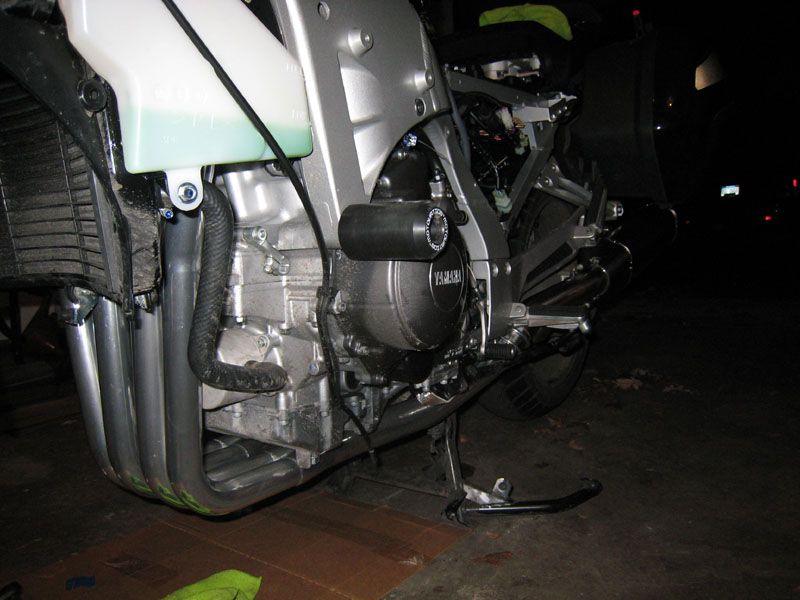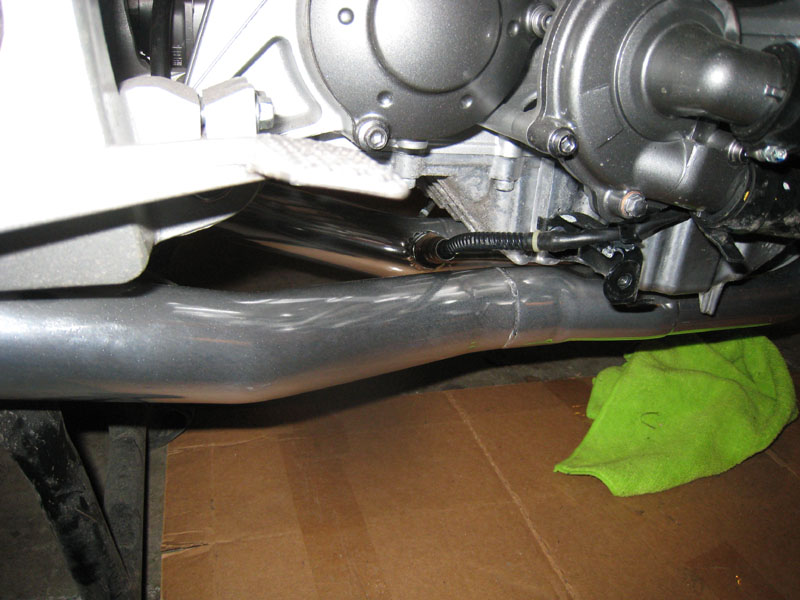Maybe the Mottty AFR is not for me. I'm actually planning on eventuality installing a pair of two brother's and would like to dyno tune the bike to its maximum potential without losing reliability. I'm not really interested in tinkering so much. I am simply looking for the ability to adjust for maximum HP and Torque while using an O2 sensor.
Maybe the desire to tinker is more of a requirement for me since I'm one of the first to try it. If I succeed with my tinkering and share the results, tinkering will be much less necessary, except for maybe adjusting the AFR map to target YOUR personal common cruising speeds for fuel economy. However, the potential for tinkering is definitely there for those who would enjoy it. Modifying the map in terms of air/fuel ratio with data logging feedback is MUCH safer than blindly making changes to fueling relative to stock fueling. I might take my bike in to a dyno tuner this spring just to determine the optimum air fuel ratio for max power on my bike. Then I'd enter that value across the board on the AFR map and get a HP/TQ chart
 Sweet, I look forward to seeing your results.
Sweet, I look forward to seeing your results. 
My understanding is most other tuners on the market require you to disconnect the O2 sensor. Please correct me if I am wrong, with a closed loop system if you set fuel air mixture, throttle, position etc on a dyno for maximum HP- that threshold for maximum HP setting will stay constant even if there is change in elevation, barometric pressure, temperature and so on. By disconnecting the O2 sensor you are relying solely on a map that will almost never be ideal for real conditions. I would not even know were to start without the aid of a dyno and a professional tuner. I'm certainly not an expert in this area maybe you can suggest another product to fit my situation?? If you think the Motty AFR is a good fit, then I look forward to your findings.
Yes, the stock O2 sensor must always be disconnected when attempting to override stock fueling. That's because the stock system uses the O2 sensor to achieve 14.7:1 AFR under certain conditions (a good AFR for fuel economy and low emissions). The stock sensor is a narrow-band sensor that can only detect if the AFR is about exactly 14.7:1, or if it is some indeterminable amount lower or higher. If you leave it plugged in, then in some conditions the stock system would fight against the altered fueling.
So therefore the O2 sensor for the Motty a wide band sensor? :huh:
I wasn't to clear with my original reply, I did understand from your post that even with a Motty the stock O2 sensor must be disconnected. Basically what I was intending to say, "I'm interested in a closed loop system like the Motty that utilizes an O2 sensor, whether it's a stock or an aftermarket unit and not an open loop system that's solely dependent on maps."
The fuel injection system (EFI) does make adjustments to account for elevation, intake pressure, etc. However, the adjustments that the EFI makes are made under the assumption that the stock EFI system is working alone and not altered. It has no way of verifying that its adjustments achieved the desired results. Similarly, the Power Commander just always makes the same adjustments. The combination of the stock adjustments for atmospheric conditions with the Power Commander adjustments will put you further away from the results of dyno tuning as the atmospheric conditions become less like those that existed in the dyno room. I've heard of some people getting their Power Commanders dyno tuned twice to try to make up for this - once in the summer and once in the fall/spring for cooler weather.
Yea, that's exactly what I want to avoid!!!
If you want closed-loop automatic self-tuning, your choices are the Motty and the new Power Commander V with the auto-tune module. Neither choice is magic. They are still tools that should ideally be adjusted to perform whatever job you want done (e.g., setting up the AFR map). Since the Power Commander is model specific, it will likely come pre-configured with decent default settings for your bike. I'll be working on good default settings on the Motty for an FJR. Looks like the decision will be driven mainly by price, features and ease of installation. You have to be willing to strip some wires and solder if you get the Motty (or pay someone to do it for you).


































